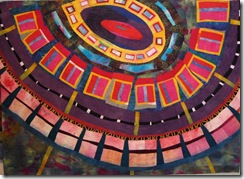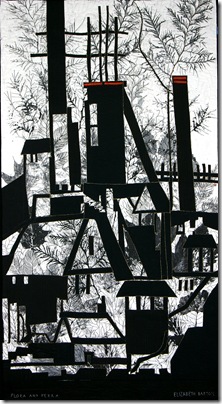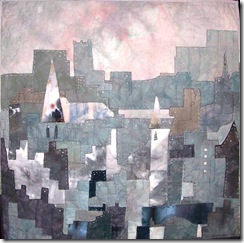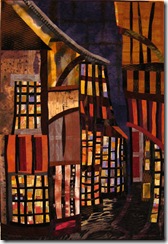to see a show of parallel paintings and quilts...
 |
| The watercolor |
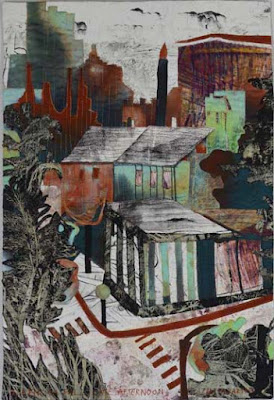 |
| The quilt
Meanwhile, having got the show all delivered and set up, I turned to other things......and......
|
But talking to him about a number of different activities (reading, typing, swimming, dancing, speaking a foreign language, music, learning, drawing etc), I realized that he kept coming back with the same refrain: "I wasn't naturally good at it, so I gave up". Sadly he may well have tried these things but been laughed at by his peers...or even parents or teachers.
Of course few of us are "naturally good" at anything! And those that appear to be, are generally speaking the product of homes where that particular activity has been encouraged, taught and stressed from a very early age - so early that they don't remember a time when they weren't engaged in it.
Yes it would be lovely to grow up in a bi- or even trilingual home with highly artistic or musical parents who had us drawing, painting, singing and playing at an early age with lessons in skiing and skating and swimming and tennis, and lots of books being read and discussed, and computers with fun typing games - oh yes! that would be really lovely! And then we could be so happy because we were "naturally good" at an amazing number of things!
The childhoods of Picasso and Mozart and the Williams sisters and many others such are well known and you can see how the access, the encouragement, the teaching and training began right from the minute they could hold a pencil/racquet or plonk out notes on a keyboard (not at the same time of course!)
It's been said many times: the way to the famous musical performance venue, Carnegie Hall...is "practice, practice, practice". And, while you won't get good at doing everything by practicing, I think it's pretty clear you will get much better at your practiced activity. I doubt Mozart was very good at tennis, and I don't think Picasso or the Williams sisters could form a musical trio! Be interesting, though, wouldn't it?
With something like art and art quilts, the best way to "practice" is to keep making work of the same type - focussed practice . (I'm sure that's true of other activities but I don't have much experience of them.) Working in a series, whether it be a series of serves, of sonatas or of serigraphs, develops one's abilities tremendously. You can become very good at what you do if you specialize. That's why you don't go to a rheumatologist for brain surgery!
Working in a series is also very emotionally satisfying. You're not scattered around trying this idea you saw there and that idea you saw here, you're looking inside yourself: finding out what really really draws you in, what subject, what format, what focus makes you feel really connected - to yourself, to your art, to your subject.
it just so happens (!!!) that I have a short course focussing on Working in a Series beginning this week with the Academy of Quilting and I do have a book out - with the same name - published by C&T last year, you can order a signed copy from me, or go to your local independent book seller, or Amazon. Do think about the class though...you don't need any prior experience. Also it would be helpful for other media..other than quilts. It would be lovely to see you in class! Please feel free to use the Comments section of this blog for any questions, or email me privately (link on the sidebar). But whether you're interested in the class or not, do think about the importance of practice next time you feel those words "I'm not naturally talented" about to pop out of your mouth!!!
There's the old story about the famous pianist who was approached by an admirer after a concernt: "I'd give an arm and a leg to be able to play like you", said the fancily coiffed admirer. He replied: "Madam, I gave 40 years of my life!". Now you don't have to give 40 years to improve!! Really, it does start working in the first couple of weeks.....give practice a try!
And, if you have been, thanks for reading! Elizabeth








